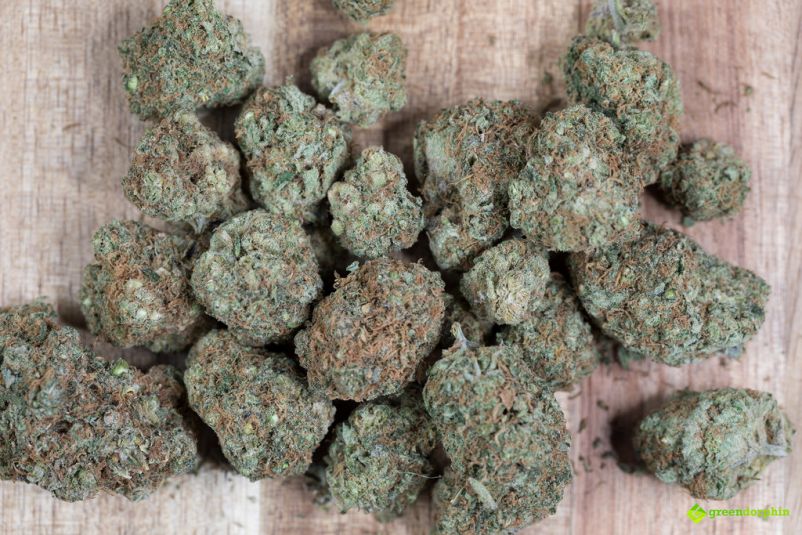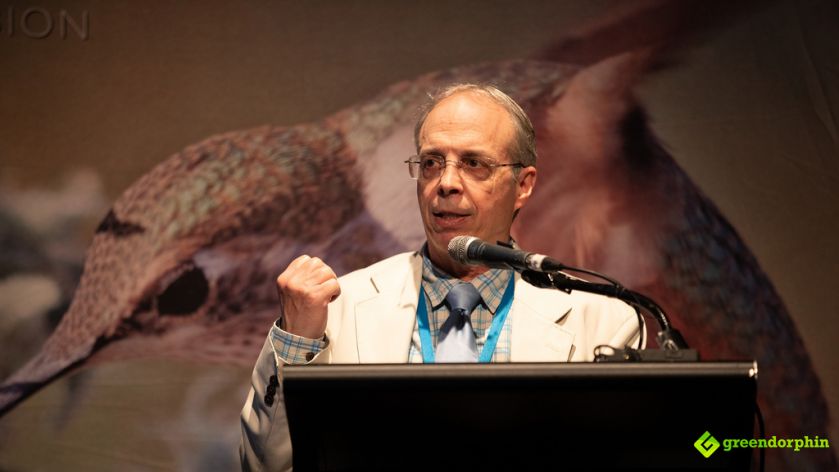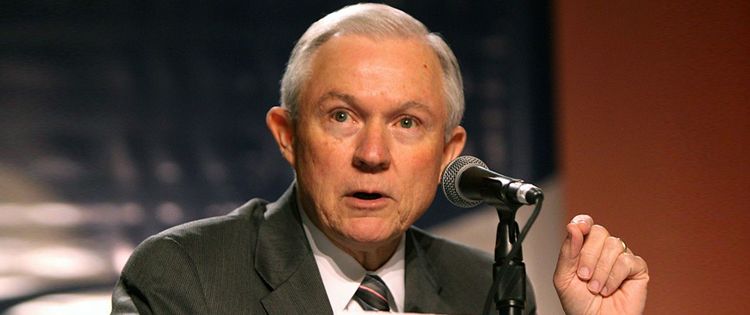Despite the overwhelming opportunity, the United States is losing out on the $30 billion medical marijuana industry as other countries around the world are monetizing on the vacuum the Federal government has created by limiting medical research and export opportunities.
Lyle Craker is currently staying in the basement of the University of Massachusetts at Amherst. He served as a professor in the Stockbridge School of Agriculture way back in 1967.
His specialization is in medicinal and aromatic plants. Together with his students, they would do experiments such as subject basil plants to high temperatures to study effects of climate change on active elements or most famously known for plant enthusiasts as constituents.
He was so hands-on with his botanical research that his life basically revolved around it. He was a quiet old man, never tasted alcoholic substances, nor has he smoked pot, ever.

Craker might not be the most likely candidate for working with medical marijuana but then Rick Doblin convinced him to do so decades ago.
The issue of medical marijuana has been largely politicized and it seemed that someone like Lyle Craker would not be fit for the position. However, Craker being a behind the scenes man became an advantage for Doblin to work with him on medical marijuana production.
Craker’s life was free of controversies as he had lived his life low-key, the reason for Doblin to pick him as his partner in the efforts of trying to loosen Drug Enforcement Administration’s strict policies on the medical marijuana research.
Rick Doblin was the founder and executive director of the Multidisciplinary Association for Psychedelic Studies (MAPS). It is a nonprofit organization that advocates for the research on the therapeutic uses of psychedelic drugs such as LSD, MDMA also known as Ecstacy and marijuana.
Through the efforts of Doblin, Craker was convinced to apply for a license to grow the cannabis plant for his medical research in 2001. Doblin has lobbied for the permission of the federal court regarding the clinical research trials on various psychedelics.
He had a doctorate in public policy and he does not deny the fact that he was a drug user. He saw the potential of cannabis in the field of medicines and it challenged him in the public-relations battle.
Since the 70s, marijuana, for the DEA, has been as dangerous as heroin, and Ecstacy putting it under the DEA Schedule I substance. Meaning that in the eyes of the Federal government, it has no medical benefits and has a high potential for abuse.
Since 1968 up until today, there has been only one facility allowed by the DEA to legally cultivate marijuana for research studies.
It is on a 10-acre area located at the University of Mississipi. It was funded by the National Institute on Drug Abuse (NIDA) and is managed by Ole Miss School of Pharmacy. It has been the only source of marijuana for those studies that would involve FDA-approved research with cannabis.
This has been hard for the researchers even when scholars are free to apply to the Food and Drug Administration and the DEA for practices on Schedule I substances and there are even different labs that are allowed to produce LSD and Ecstacy for the same purpose.
With all this said, marijuana, which has been legalized for medical use by doctor’s prescription in 29 states and for adult use in eight states, is viewed as more dangerous and less efficacious in the federal governments perspective than cocaine, oxycodone, or methamphetamine which are found under Schedule II substances.

In Doblin’s view, NIDA has been monopolizing the supply of the plant and slowed down some research that gear toward understanding cannabinoids, terpenes, and other active elements of marijuana that are helping with managing pain, hunger, and the possibility that it can cure cancer.
It was Doblin who provided funding, PR, and lobbying support for physicians who wanted to research on marijuana in the late 1990s. As a matter of fact, he has done this twice. A lot of researchers resulted in effective treatment for an AIDS-related wasting syndrome or the treatment of migraines.
What led him to Craker was his frustrating experience with the plant and promised to himself that he will crush the NIDA monopoly.
Doblin convinced Craker to file an application for the license on cultivating “research-grade” marijuana at the University of Massachusetts. He wanted to stage FDA-approved studies. He was told that his application was lost after six months and he tried to apply again the next year.
He was ignored by the DEA for two years and he sued them while he was backed by MAPS. U.S. senators from Massachusetts supported Craker in his project and his application leading to the federal court of appeals ordering the DEA to respond to Craker. They actually did respond but they denied his application.
Three years after he was denied in his second application, his application was finally ruled by a DEA administrative law judge that it should be granted. However, it was just a recommendation to the DEA leadership.
He waited for the next two years up until the last week of Bush in the Oval Office just to know that his application was denied again. It was until the last months of Obama as president that the DEA declared that they would again grant new licenses after many decades.
Rick Doblin was the happiest man when he heard this and he was able to convince Craker, who had lost hope after so many rejections, to believe in his study again.
Together with 25 other groups, Craker applied for a license with a recommending signature of the university’s provost professor and with Senator Elizabeth Warren’s recommending letter of support. Because of many previous rejections, Craker expected that he would never get the license.
Around the world, cannabis has shown its potential, especially in the field of medicine and Craker believed so too. He was vocal about this when he spoke at a hospital in New Hampshire.
He said that it facilitated healing in brain-damaged mice. He then added that if cannabinoids can do that, they should be used in medicines.

“I’m naive about a lot of things,” he says. “But it seems to me that we should be looking at cannabis. I mean, if it’s going to kill people, let’s know that and get rid of it. If it’s going to help people, let’s know that and expand on it. But there’s just something wrong with the DEA. Somehow, marijuana’s got a bad name. And it’s tough to let go of.”
Ethan Russo was a practising neurologist in 1990. Like Craker, he has also gotten tired of his limited pharmaceutical options.
“It occurred to me I was giving increasingly toxic drugs to my patients with less and less benefit,” Russo said, who is now one of the world’s leading researcher and advocate for marijuana medicine.
“It caused me to go back to a childhood interest in medicinal plants and see if there were alternatives.”
Doblin and MAPS-supported Russo celebrated when the state of California legalized the use of marijuana as a prescription drug. The neurologist prepared himself for a clinical trial about cannabis as a treatment for migraines.
He needed to get a supply of the plant from NIDA to meet the FDA requirements. He was rejected twice by NIDA but then the FDA assumed oversight of “investigational new drugs” and they approved Russo’s application.
For the FDA, his study was full of potential and was legitimate enough for them to grant approval. But the use of marijuana required a second “public health service review,” according to a policy approved in 1998 to foster more research.
However, NIDA denied Russo access to the plant. “Despite the fact that the FDA had approved it,” he says.
Cannabis research was fast growing and Russo began to publish on the subject until he became a consultant of a British startup, GW Pharmaceuticals Plc, founded by doctors who have been granted licenses to cultivate the cannabis plant by the U.K. Home Office.
After five years, Russo joined the company as a full-time medical monitor of clinical trials for drugs developed from cannabis that GW cultivated – Sativex for pain from cancer and Epidiolex for the treatment of severe seizure disorders.
Trials were conducted in different countries including the U.S. However, even though Sativex is now available in every country where its trials were conducted, in the United States, GW is still waiting for its approval.

Russo said, that “Basically I had begun working for a foreign company because of the impossibility of doing clinical work with cannabis in the United States.” He added, “And here we had a situation where a medicine made from cannabis, that was manufactured in England, was able to be imported and tested. It was legally impossible to do the same thing based on the U.S.”
In Doblin’s view, if the NIDA monopoly eventually broke, a lot of companies would be interested in growing medical marijuana “to make extracts in non-smoking delivery systems that can be patented” meaning it to be used in pharmaceutical purposes. For him, this was not at all bad. “But MAPS is focused on developing a low-cost generic plant in bud form,” he says.
For Doblin, specific varieties of marijuana are important to be FDA-approved.
Legitimate research in marijuana could help in slashing the cost of Medicaid and Medicare. If only doctors and the FDA controlled chemical makeup and potency could be done more successfully, it could be used as an alternative to current options for pain management.
In states where medical cannabis has been legalized, opioid use drops significantly as studies have reflected. Marijuana as an alternative is backed by a study from July 2016 by the Health Affairs and it showed that the consumption of prescription drug has dropped significantly, saving a lot of money on public health.
“The marijuana plant in bud form, if we can get it available by the FDA, is going to be incredibly cheap,” Doblin says. According to him, his current Israel partners who own the Better by Cann Pharmaceuticals, are able to produce organic, high-potency trimmed marijuana for just 65¢ a gram, or $18 or so per ounce.
He said, “when you’re talking about kicking people off of health insurance and reducing Medicare and Medicaid costs, we better find a way to provide medical relief to people at a low cost.”

Over 60 percent of Americans now favor legalization of marijuana. And at around 94 percent of the American population favor it to be legal for medical use.
According to Doblin, it could also be an avenue for business. Booming cannabis research industries can be found in Canada, Israel, and the Netherlands. In Israel, some of the studies are even government-funded.
“We have an enormous opportunity that we’re squandering as a country to reduce health-care costs, build businesses, and create jobs,” Mr. Doblin says.
Russo also subjects himself to this fact. He is now based in Washington as a consultant for other biotech startups that are primarily focused on cannabis projects.
“Let’s face facts: This is a very technologically advanced nation with a great deal of talent. There is no way, shape, or form that the dangers of cannabis warrant this kind of control,” he says. “There are issues. There are side effects. Anyone who tells you differently is simply inaccurate. However, the kinds of problems related to cannabis administration are totally controllable. And it is a much safer drug than many, if not most, pharmaceuticals that are currently being approved.”
Russo just arrived from a conference in Medellín, Colombia. “I think that there’s a greater chance of significant clinical cannabis research coming out of Colombia in the coming years than there is in the U.S.,” According to Russo. “Why would people allow this loss of business in a situation where, clearly, Americans could be preeminent?”
The numbers according to MAPS are very impressive:
$31 billion: Potential size of global medical cannabis market by 2021
$1 billion: Value of medical cannabis that could be exported annually by Israeli companies
$100 million: Foreign investment in Israeli cannabis startups in 2016
70+ Canadian companies with licenses to cultivate, produce, and sell medical marijuana
A former DEA agent, Tony Coulson who was once a sceptic of marijuana, is now an advisor for Craker. His perspective about marijuana changed when his son, a combat soldier, suffered from PTSD or Post Traumatic Stress Disorder after he was deployed in the Middle East.
“For years I was of the belief that the science doesn’t say that this is medicine,” these were Coulson’s exact words. “But when you get into this curious history, you find the science doesn’t show it primarily because we’re standing in the way. The NIDA monopoly prevents anyone from getting into further studies.”
 Image source
Image source
The Obama administration was the one to blame, according to Coulson. But the decision on the licenses was passed onto Attorney General Jeff Sessions who also is a believer of the dangers of marijuana. He is now tasked to act upon the NIDA monopoly. “Sessions has a 1930s Reefer Madness view of the marijuana world,” Coulson says. “It’s not realistic, and it’s not what rank-and-file DEA really are concerned about. DEA folks have moved beyond this.”
Rick Kimball, a former banker turned marijuana advocate who is also a trustee for marijuana at the Bookings Institution said, “I guess I take a nationalist stand here. We have a huge opportunity in the U.S., and we ought to get our act together. I’m worried that we’re ceding this whole market to Israelis.”
Research on cannabis are nascent but the fact that there are at least 160 cannabinoids and as many as 500 terpenes and flavonoids should be taken into consideration.
All of the above-mentioned species could be mixed and matched and even separated out. There have been a lot of benefits that can be derived from Cannabinol (CBN) such aiding in sleep. Another cannabinoid, Cannabigerol (CBG) may also possess anticancer qualities. A researcher from Israel has already synthesized 22 different versions of THC to treat specific neurological conditions.
“There’s reason to believe there’s a cornucopia of medicines in there,” Kimball says—medicines that, in theory, are patentable.
There are also existing labs that grow genetically modified varieties of these plants. Even when the majority of their work is focused on increasing potency for recreational use such as getting people high, they are progressing in cultivating and engineering plans through sophisticated methods.
The director of the Marijuana Project at Ole Miss, Mahmoud ElSohly, is only able to cultivate limited varieties of the plant while trying to keep undergrads away after some of them were caught stealing the buds.
ElSohly waited three years before his project to grow a strain high in Cannabidiol (CBD), a nonpsychoactive cannabinoid, to be approved by the DEA. CBD was the key property in the GW Pharmaceutical’s epilepsy drug.
“I am the most restricted person in this country when it comes to the production of cannabis and different varieties,” ElSohly says. “In Colorado and Washington or any other state where people don’t have to get any approval from anybody, they just do it. They have the freedom to experiment. I don’t have that freedom. My hands are tied. It’s ridiculous.”
There is still no progress regarding the 25 applications to grow marijuana for research purposes. The DEA made sure to not comment on this and keep the names of the applicants in confidentiality. In the case of Craker, he has not yet heard anything for the DEA.
Craker says, “The federal government can be so stubborn. To me, they’ve closed their minds.”
Even though Craker can’t grow marijuana, he does talk about it in his plant medicine classes. “I go through the scenario of what we’ve tried to do,” he says.
Finally, according to him, some of those students might have the opportunity in the future to do the work he’s been wanting to do for 20 years. “My generation has passed, and we haven’t made it. But it’s going to happen. I just can’t believe it’s going to be forever.”
Meanwhile, Canada, Israel, Colombia and a growing number of other countries are waking up to the business opportunity in medical cannabis and potentially leaving the United States behind.
Share your views in the comments section below.
- How Commercial Cannabis Growers Can Benefit from Using a Software - May 17, 2019
- Understanding CBD Interactions and Why CBD and Your Brain Can Be Best Friends - January 4, 2019
- The Difference Between Using THC and CBD - December 19, 2018


